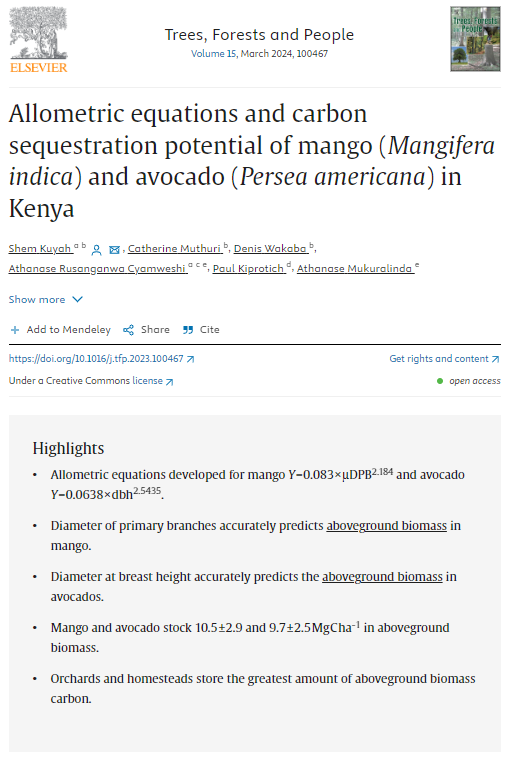Allometric equations and carbon sequestration potential of mango (Mangifera indica) and avocado (Persea americana) in Kenya

Reliable biomass estimates are needed to quantify the climate benefits of fruit trees and include them in landscape restoration and international commitments such as the Nationally Determined Contributions under the Paris Agreements. Fruit trees are widespread in smallholder farming systems, where they provide income, nutrition benefits, and other products and ecosystem services with Mangifera indica (mango) and Persea americana (avocado) being the most popular in East Africa region. However, their contribution to climate change mitigation through carbon sequestration and reduction in greenhouse gas emission has not been explored because of a lack of allometric equations to quantify their biomass accurately. This study developed allometric equations from data collected on 51 mango trees and 40 avocado trees harvested in Makueni and Kiambu Counties in Kenya, respectively. Allometric equation using mean diameter of primary branches (µDPB) or diameter at breast height (DBH) as the predictor variable provided better predictions for mango and avocado, with a low mean absolute percentage error (MAPE) of 28.8 % and 18.4 %, respectively. From an inventory of 23 plots in Makueni (total area = 4.4 ha) and 36 plots in Kiambu (total area = 14.42 ha), aboveground biomass in mango trees was estimated to be 22.3 ± 6.3 Mg ha−1 and 20.6 ± 5.4 Mg ha−1, respectively. Much of the biomass was found in trees located in homesteads and orchards. Allometric equations developed in this study will support the quantification of carbon stocks for projects aimed at generating carbon credits by including fruit trees in the landscape.